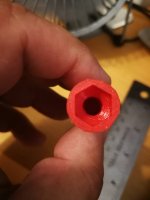I just made some handy tools today and thought I'd share, I would imagine others here have knocked up their own tools specifically for audio work and if you wanted to share in this thread, I'm all for it.
What I made were hand tools for Potentiometer / rotary selector nuts. I often use deep sockets, or longnose pliers, but neither are especially easy to use for this job - pliers can slip, and with a deep socket the nut tends to disappear up the hole especialy when trying to reinstall it.
So I cranked up Fusion 360 and designed a driver specifically for the task, scaled for 11mm and 12mm, "hit print" and voila.
They work a treat for the job. As the deep recess is enough for the shaft (it's 9mm diameter) but not the nut, it's easy to reinstall.
One thing which occured to me after, space for a small magnet (to the side of the recess) would be great for retrieving the nut and washer. I might give that a go in revision 2. Another idea is a hex nut up top, for those times "additional encouragement" is needed, but I don't know just how much one of these will take before it breaks (only one way to find out, I guess) and at that point it's probably time for the big guns anyway.
If anyone wants the .stl files to print their own (for personal use only, please) drop me a PM. One I printed in PETG, the other PLA, with 1.6mm walls (the shaft of the tool is essentially solid aside from the recess). They seem sturdy enough.
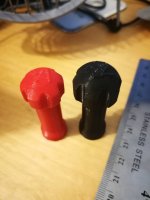
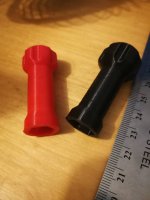
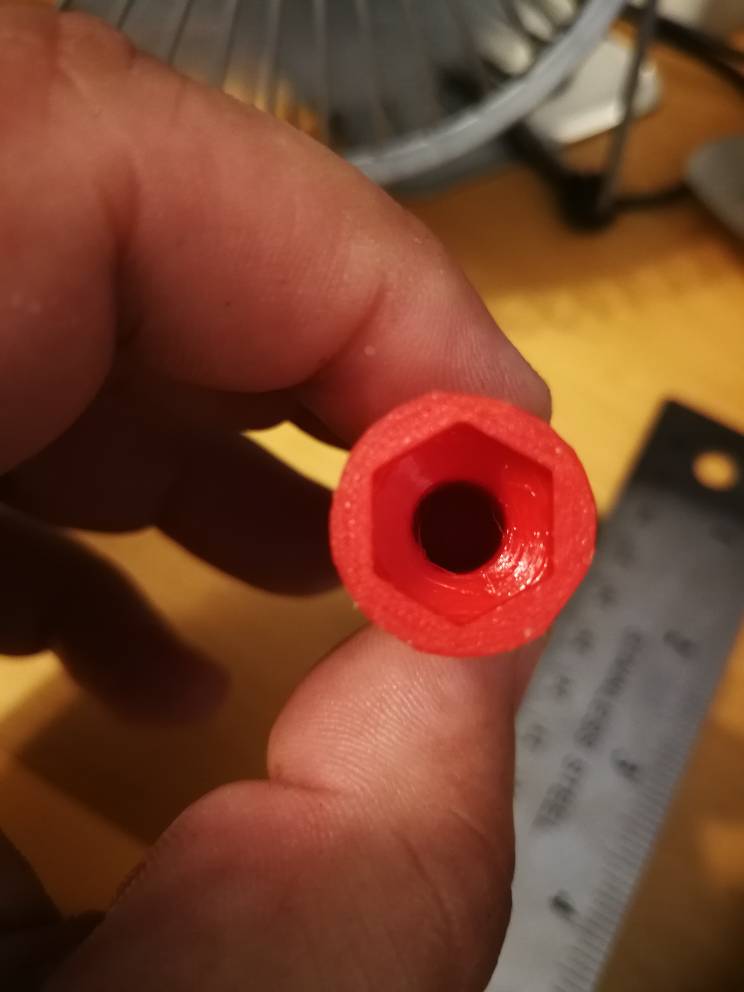
What I made were hand tools for Potentiometer / rotary selector nuts. I often use deep sockets, or longnose pliers, but neither are especially easy to use for this job - pliers can slip, and with a deep socket the nut tends to disappear up the hole especialy when trying to reinstall it.
So I cranked up Fusion 360 and designed a driver specifically for the task, scaled for 11mm and 12mm, "hit print" and voila.
They work a treat for the job. As the deep recess is enough for the shaft (it's 9mm diameter) but not the nut, it's easy to reinstall.
One thing which occured to me after, space for a small magnet (to the side of the recess) would be great for retrieving the nut and washer. I might give that a go in revision 2. Another idea is a hex nut up top, for those times "additional encouragement" is needed, but I don't know just how much one of these will take before it breaks (only one way to find out, I guess) and at that point it's probably time for the big guns anyway.
If anyone wants the .stl files to print their own (for personal use only, please) drop me a PM. One I printed in PETG, the other PLA, with 1.6mm walls (the shaft of the tool is essentially solid aside from the recess). They seem sturdy enough.


@Kay Pirinha Yes, plenty strong. I had one here which was done up reasonably tight and had no issues undoing it and doing it back up just as tight again. I printed these with 1.6mm wall thickness so that the shaft (around the recess for the pot shaft) is essentially solid. 3D printed objects can be surprisingly strong if the printer and slicer settings are dialled in correctly for the material.
In torque it is as strong as the layers stick together.
Another option would be splitting the designed tool laterally in two long halves, printing them laterally, and gluing the two halves with a hard-plastic glue ("plastic welding"). The glue holds PETG or PLA better than the melted layers stick together.
Another option would be splitting the designed tool laterally in two long halves, printing them laterally, and gluing the two halves with a hard-plastic glue ("plastic welding"). The glue holds PETG or PLA better than the melted layers stick together.
@phofman Yes may well be, although I prefer to print in one piece if I can.
Having said what I said about them being strong, I just tried pulling them apart and I did have a layer adhesion problem on the PLA print. However the PETG (printed with no cooling) is still very strong.
I have just fitted new cooling fans and I suspect I had them turned up too high I'll need to try the PLA print again with less cooling.
I'll need to try the PLA print again with less cooling.
Having said what I said about them being strong, I just tried pulling them apart and I did have a layer adhesion problem on the PLA print. However the PETG (printed with no cooling) is still very strong.
I have just fitted new cooling fans and I suspect I had them turned up too high
A redesign to improve the strength of the shaft (removing stress risers due to steep angle changes and generally beefed up), a larger handle diameter, and tweaking print settings (increased layer height and extrusion, randomising the z seam, allowing over extrusion on inner walls) have made for a much sturdier and more useful tool.
Small recesses have been provided for 2x1 magnets near the business end, of which 500 are on the way from China, but the nut retains itself quite well as it stands. Sorry, the black doesn't photograph all that well [emoji28]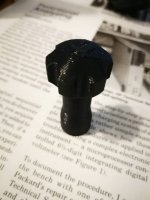
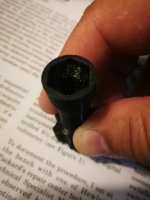
Small recesses have been provided for 2x1 magnets near the business end, of which 500 are on the way from China, but the nut retains itself quite well as it stands. Sorry, the black doesn't photograph all that well [emoji28]


You know about annealing 3D prints in salt to increase strength? The salt supports the shape as the plastic is softened/remelted, then after cooling you wash it off with water.
The STRENGTH of 3D prints REMELTED in SALT - YouTube
The STRENGTH of 3D prints REMELTED in SALT - YouTube
- Status
- This old topic is closed. If you want to reopen this topic, contact a moderator using the "Report Post" button.
- Home
- Design & Build
- Equipment & Tools
- Homespun Tools for Audio
